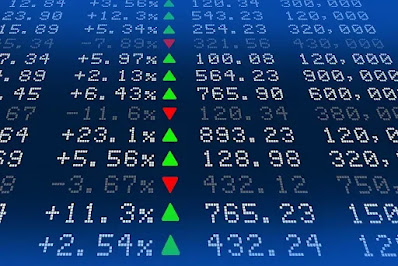How Did Investor Sentiment Impact Dot-Com Stock Prices?
The impact of investor sentiment on dot-com stock prices during the late 1990s and early 2000s was profound and multifaceted. Investor sentiment, characterized by exuberance and irrational optimism, played a pivotal role in driving dot-com stock prices to unsustainable levels. This sentiment was fuelled by various factors, including technological innovation, fear of missing out (FOMO), speculative trading, overvaluation, and media hype; all of which led to overconfidence with investors (see Figure 1).
 |
| Figure 1: A visual representation on how FOMO led to overconfidence as seen during the Dot-Com Bubble Source: FasterCapital |
The rapid growth and potential of the internet as a transformative technology led investors to believe that dot-com companies represented the future of business and commerce. This optimism was further exacerbated by a fear of missing out on potential gains, resulting in a herd mentality among investors who rushed to invest in dot-com stocks regardless of their underlying fundamentals. This speculative behaviour contributed to widespread overvaluation, as dot-com stocks were often valued based on metrics like website traffic or user growth rather than traditional financial metrics.
The widespread overvaluation aforementioned was shown through the NASDAQ Composite Index, which was heavily weighted towards technology and internet-based stocks. Pre Dot-Com Bubble, the index experienced steady growth from ~700 basis points and more than doubled to ~1500 basis points. However, during the bubble, this growth became irrational, with the index peaking at 5,048.62 basis points in March 2000. Once the bubble burst, the market was quick to sell-off these technology stocks which had reached unreasonable highs, with the index plummeting 80% from its peak.
 |
| Figure 2: The NASDAQ Composite Index during the Dot-Com Bubble Source: Global Entrepreneurship Institute |
Media coverage also played a significant role in amplifying investor sentiment, with positive portrayals of internet companies and the potential of the internet economy further reinforcing optimistic beliefs. However, when the dot-com bubble eventually burst, investor sentiment quickly turned negative, leading to a mass sell-off and the eventual collapse of numerous dot-com companies.
A Case Study: Amazon
Looking at Amazon's stock prices and fluctuations during the dot-com bubble, we can see just how drastic the bubble was (see Figure 3 for full visualisation):
Pre Dot-Com Bubble (1995-97): Amazon had its Initial Public Offering in May 1997, priced at $18 per share. By the end of 1997, Amazon's share price had risen to ~$29 per share.
During the Dot-Com Bubble (1998-2000): Amazon's stock price rose drastically during this period to a peak price of ~$200 per share in January 2000, mirroring the broader market sentiment.
Post Dot-Com Bubble (2001-02): Amazon's stock price dropped to as low as ~$6 per share in September 2001 post Dot-Com Bubble, representing a 97% decline from its peak 18 months prior.
 |
| Figure 3: Amazon (AMZN) Stock Price as Observed during the Dot-Com Bubble Source: Bespoke |
In conclusion, investor sentiment, characterized by euphoria and irrational exuberance, played a decisive role in inflating dot-com stock prices to unsustainable levels during the late 1990s and early 2000s, as shown above through Amazon, ultimately contributing to the dot-com bubble and subsequent crash.



Comments
Post a Comment